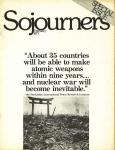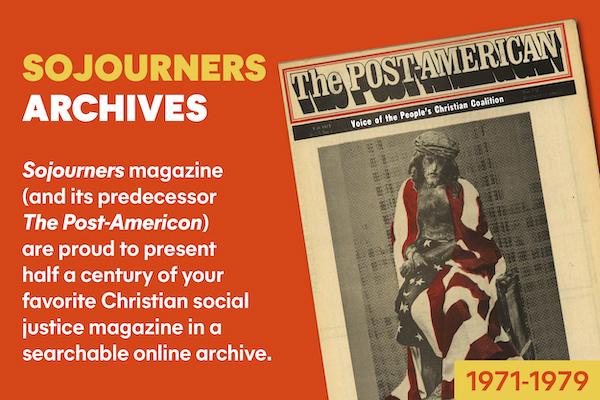Does God approve of our intent to use nuclear weapons? I don’t believe so. Moreover, I do not believe God approves of even the possession of nuclear weapons.
The danger of world suicide through nuclear war “compels us to undertake an evaluation of war with an entirely new attitude,” Vatican II said. Einstein puts it this way: “When we released the energy from the atom, everything changed except our way of thinking. Because of that we drift towards unparalleled disaster.” Something of what Einstein means is this: we still look upon war as a conflict between two armies. The armies try to break through each other’s front line to reach the civilian population. When they do, the suffering is so great that the war is ended. However, war with nuclear weapons will reach the civilian immediately. Nuclear missiles take only 24 minutes to travel between Moscow and Washington. Both the speed and total penetrability are so different from war in the past that the word “war” should not be used. Something like “mutual suicide,” “doomsday,” or “apocalypse” would be more accurate.
What can a nuclear weapon do? In his book, Nuclear Disaster, Dr. Tom Stonier of Manhattan College, describes what would happen if a 20 megaton nuclear weapon was detonated in the center of New York City:
The first result would be death. Ten times as many deaths as all the battle deaths that occurred in all the wars of American history--from the Revolution up to and including the 55,000 battle deaths in the Vietnam War. Seven million people would die from blast, firestorm, and radiation. The blast would cover a radius of ten miles. It would dig a crater 650 feet deep and a mile and a half across even if it was dropped in solid rock. All living things, even in the subways, would die. Trucks and automobiles would be hurled about like giant Molotov cocktails spewing gasoline and fire. Most of the victims would be killed by falling buildings.
As the shock front moved out to its ten mile radius, the huge vacuum at its center would begin to draw the winds back at speeds up to 125 miles per hour. A house or tree caught in this double pressure would be blasted from both sides.
Above the blast a ball of fire would form. This fireball, four miles wide, would swiftly rise to a height of about 20,000 feet. At its center the heat would be eight times hotter than the sun, its heat so intense that the unexposed human body 40 miles away would receive second degree burns. Two hundred and fifty miles away, as far as Washington, many people would suffer severe eye damage.
Within a 39 mile radius a sea of fire would roll and boil fanned by the winds of the shock wave. Asphalt, which we do not generally consider combustible, would pass its combustion point of 800 degrees and burn.
From the huge cavern dug by the blast, vaporized material pulled up into the air by the fireball would form a radioactive cloud of death. This cloud would blow with the wind, over Connecticut towards Hyannisport and out to the ocean. The cigar shaped cloud would grow until it covered an area of 4800 square miles.
At the center the radiation intensity would be measured at about 2300 roentgen units. One roentgen unit is severe enough to damage a primate cell. Four hundred roentgen units are 50 percent lethal. The lethal capacity of this radiation would decrease as it got further from New York. What would a person need for protection from radiation? A shelter enclosed on all sides by two feet of concrete or three feet of earth with its own oxygen, food, and water supply for at least 96 hours, perhaps 12 days. At the end of ten months there would still be a dosage of 100 roentgen units over most of the area.
This is not imaginary. It is carefully deduced from scales made through American testing and through measurements from Hiroshima and Nagasaki bombing.
Can the use of these weapons be reconciled with the Gospel? Can even their existence be reconciled with the command, “Love your enemies”? The United States policy is that we will retaliate with massive nuclear destruction if we are attacked. This is the very heart of our nuclear deterrence policy. This is what we mean by deterrence. Is there any way that the Christian conscience can accept this policy?
There are only two ways in which Christians have tried to reconcile war with the Gospel. One is the practice of the Christians of the first three centuries. They considered joining the army incompatible with following Christ.
The other is the just/unjust war theory of St. Augustine of the fourth century. This theory holds, among other conditions, that in any war there be a proportionality between the evil done and the good to be hoped for, and that there be no direct killing of the innocent. Have we in the nuclear age reached the point where we finally must say that war is incompatible with the Christian conscience? Can we imagine Jesus pushing the button that would release nuclear weapons on millions of people?
Can we go along with the intent to use nuclear weapons? What it is wrong to do, it is wrong to intend to do. If it is wrong for me to kill you, it is wrong for me to plan to do it. If I get my gun and go to your house to retaliate for a wrong done me, then find there are police guarding your house, I have already committed murder in my heart. I have intended it. Likewise, if I intended to use nuclear weapons in massive retaliation, I have already committed massive murder in my heart.
The taproot of violence in our society today is our intent to use nuclear weapons. Once we have agreed to that, all other evil is minor in comparison. Until we squarely face the question of our consent to use nuclear weapons, any hope of large scale improvement of public morality is doomed to failure.
Even the possession of weapons which cannot be morally used is wrong. They are a threat to peace and might even be the cause of nuclear war. The nuclear weapons of communists may destroy our bodies. But our intent to use nuclear weapons destroys our souls. Our possession of them is a proximate occasion of sin.
Father Richard T. McSorley, S.J., taught peace studies at Georgetown University in Washington, D.C. when this article appeared. At the time, he was a member of the Community for Creative Nonviolence. This article was adapted with permission.

Got something to say about what you're reading? We value your feedback!
